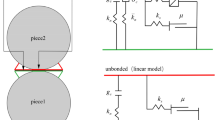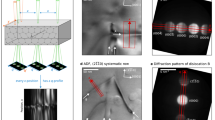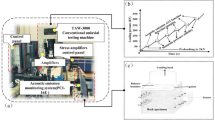Abstract
DEFORMATION of rocks on a large scale1 and laboratory scale2 produces a variety of flow patterns which have been extensively discussed. These observations show that the wide variety of macroscopic patterns introduced by plastic deformation are very similar to those introduced in more nearly homogeneous materials such as single crystals. These configurations, especially those in single crystals, have been extensively explained in terms of dislocation theory3,4, with a great deal of success. Some recent experiments on silver crystals have shown that disclinations can exist in special metal structures5. This has led me to consider if any of the folded structures in rock structures can be associated with typical patterns of disclinations. Here, I present a striking example of a structure which is consistent with a disclination and point out that the introduction of such figures might play a role in subsequent deformation patterns.
This is a preview of subscription content, access via your institution
Access options
Subscribe to this journal
Receive 51 print issues and online access
$199.00 per year
only $3.90 per issue
Buy this article
- Purchase on SpringerLink
- Instant access to full article PDF
Prices may be subject to local taxes which are calculated during checkout
Similar content being viewed by others
References
Ramsay, J. G., Folding and Fracture of Rocks (McGraw-Hill, New York, 1967).
Paterson, M. S., and Weiss, L. E., Nature, 195, 1046 (1967).
Friedel, J., Dislocations (Pergamon, New York, 1967).
Nabarro, F. R. N., Theory of Crystal Dislocations (Oxford University Press, London, 1967).
Galligan, J. M., Scripta Met., 6, 161 (1972).
Cottrell, A. H., Dislocations and Plastic Flow in Crystals (Oxford University Press, London, 1953).
Author information
Authors and Affiliations
Rights and permissions
About this article
Cite this article
GALLIGAN, J. Disclinations in Folded Structures and Geological Strata. Nature 240, 144–145 (1972). https://doi.org/10.1038/240144b0
Received:
Issue date:
DOI: https://doi.org/10.1038/240144b0



